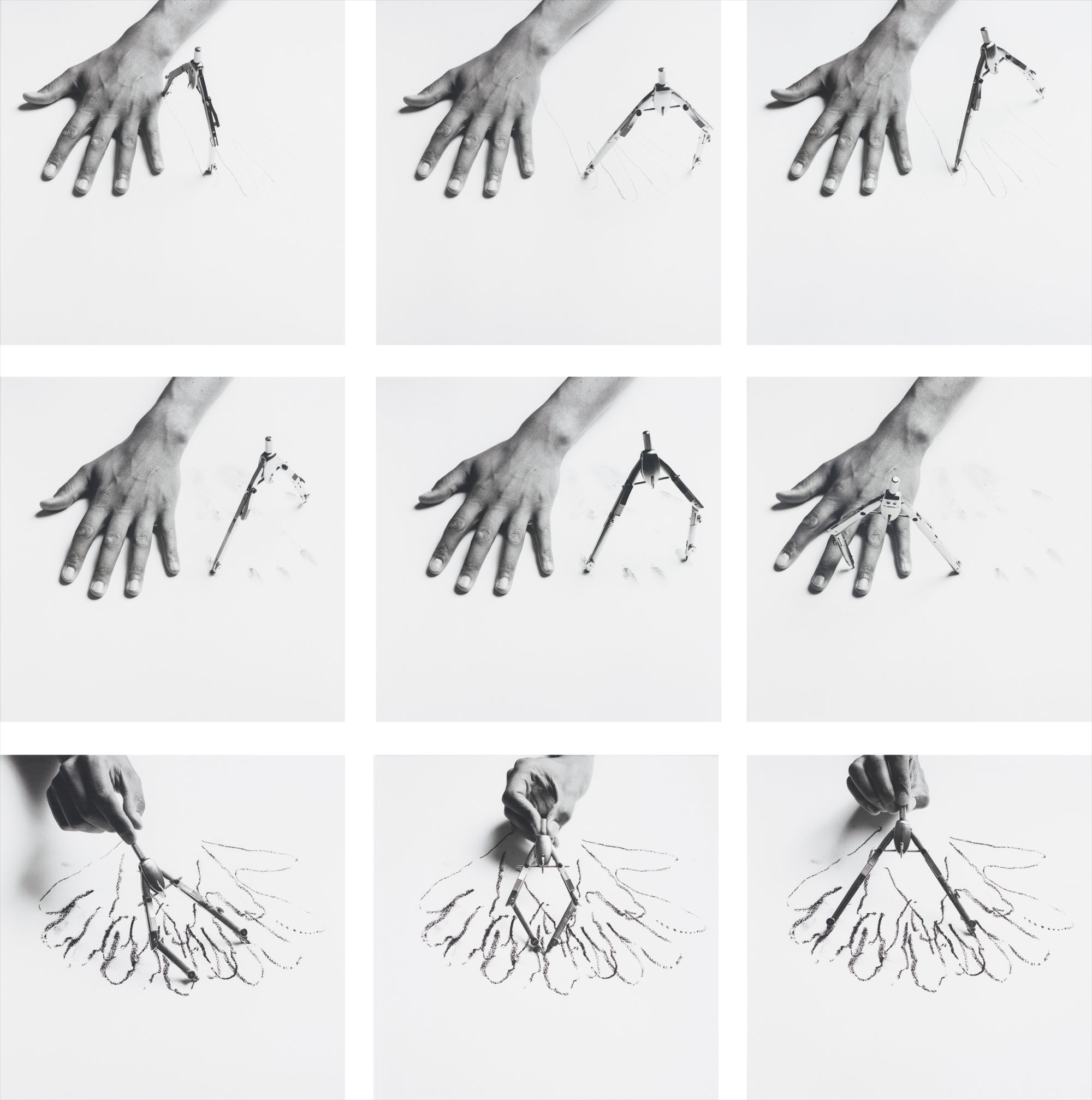

26
Robin Rhode
Ballad to Ballet
2008
Nine pigment prints.
Each 19 1/2 x 19 3/8 in. (49.5 x 49.2 cm)
Printed title, date, number 5/6 and sequential number '1-9' on a gallery label affixed to the reverse of each backing board. Accompanied by a Certificate of Authenticity.
Full-Cataloguing
“From an early age I was really taken by drawing. I loved the idea of expressing an idea, expressing a thought through mark making.” - Robin Rhode
South-African artist Robin Rhode has deftly created a style that draws inspiration from the early movement studies of Eadweard Muybridge in the 19th century as much as from the graffiti tagging of Keith Haring in the 1980s. His photographs are invariably presented in a grid format that presents a continuous sense of movement and evolution, propelling the viewers to proactively engage with the grid as they connect the succession of motions. The emphasis on movement is a critical factor in Rhode’s work. “I was raised in a very gestural society,” he has said. “Society that was very much engaged in the notion of play and playfulness and re-enactment and just pure gesture.”
The current lot, Ballad to Ballet, depicts an engaging departure in Rhode’s work, which typically depicts a full-scale of the artist (or a stand-in) against a tagged wall. Across the series of nine images, a handprint is stenciled in various positions, as if waving, and a compass is seemingly used to measure and draw. Over the top two rows, the hand appears immobile whereas the compass appears to magically dance around it. Rhode later explained that he had been drawing in his studio with a compass when he discovered that the compass moving around his hand made “a beautiful ballet.” Indeed, Ballad to Ballet was made while Rhode was working on a project for Lincoln Center in collaboration with the renowned pianist Leif Ove Andsnes on a Modest Mussorgsky composition that was meant to incorporate performance, sculpture and photography. The reanimation of the compass creates a whimsical, almost child-like charm to the work. In the bottom row, however, the roles reverse, and the hand appears to be in control of the compass, bending it at the joints and spinning it around. Indeed, the interplay between the two begets associations with performance art, and more specifically, with dance. In some ways, Rhode’s Ballad to Ballet is also in dialogue with an earlier generation of artists who focused on the hand as the sole protagonist of a performance, from Helena Almeida to Lucas Samaras, Dennis Oppenheim and Bruce Nauman. Like those before him, Rhode relies on the camera to document a performance, successfully articulating action, emotion and energy.
Robin Rhode’s work has been exhibited at the 51st Venice Biennale; the Museum of Modern Art; Centre Pompidou, Paris; Solomon R. Guggenheim Museum, New York; Studio Museum in Harlem; Walker Art Center, Minneapolis, among many others.
South-African artist Robin Rhode has deftly created a style that draws inspiration from the early movement studies of Eadweard Muybridge in the 19th century as much as from the graffiti tagging of Keith Haring in the 1980s. His photographs are invariably presented in a grid format that presents a continuous sense of movement and evolution, propelling the viewers to proactively engage with the grid as they connect the succession of motions. The emphasis on movement is a critical factor in Rhode’s work. “I was raised in a very gestural society,” he has said. “Society that was very much engaged in the notion of play and playfulness and re-enactment and just pure gesture.”
The current lot, Ballad to Ballet, depicts an engaging departure in Rhode’s work, which typically depicts a full-scale of the artist (or a stand-in) against a tagged wall. Across the series of nine images, a handprint is stenciled in various positions, as if waving, and a compass is seemingly used to measure and draw. Over the top two rows, the hand appears immobile whereas the compass appears to magically dance around it. Rhode later explained that he had been drawing in his studio with a compass when he discovered that the compass moving around his hand made “a beautiful ballet.” Indeed, Ballad to Ballet was made while Rhode was working on a project for Lincoln Center in collaboration with the renowned pianist Leif Ove Andsnes on a Modest Mussorgsky composition that was meant to incorporate performance, sculpture and photography. The reanimation of the compass creates a whimsical, almost child-like charm to the work. In the bottom row, however, the roles reverse, and the hand appears to be in control of the compass, bending it at the joints and spinning it around. Indeed, the interplay between the two begets associations with performance art, and more specifically, with dance. In some ways, Rhode’s Ballad to Ballet is also in dialogue with an earlier generation of artists who focused on the hand as the sole protagonist of a performance, from Helena Almeida to Lucas Samaras, Dennis Oppenheim and Bruce Nauman. Like those before him, Rhode relies on the camera to document a performance, successfully articulating action, emotion and energy.
Robin Rhode’s work has been exhibited at the 51st Venice Biennale; the Museum of Modern Art; Centre Pompidou, Paris; Solomon R. Guggenheim Museum, New York; Studio Museum in Harlem; Walker Art Center, Minneapolis, among many others.